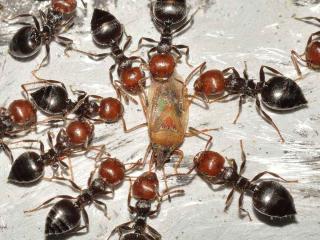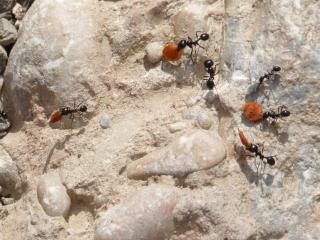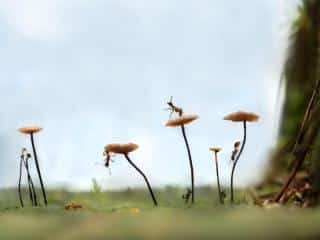

Ants are often criticized by gardeners, who tend to say that they’re invasive (though not very harmful). But digging deeper, there are many reasons to keep them in the garden. Indeed, they join in on the heavy work of recycling organic waste, in planting seeds and in protecting certain plants.
→ Also read: ladybug, a beneficial insect…
 Ants feed on proteins to grow in their larval stage. They find proteins by hunting different insects (spiders, pine processionary caterpillars, etc.) and by eating small dead prey like lizards.
Ants feed on proteins to grow in their larval stage. They find proteins by hunting different insects (spiders, pine processionary caterpillars, etc.) and by eating small dead prey like lizards.
In this way, ants actively help in control certain pests and in limit diseases. Excretions and remains rejected from the anthill enrich the surrounding plots.
Busy and very organized, ants dig galleries and tunnels to form their anthill, turning and aerating the soil as efficiently as earthworms. They thus assist in soil recycling by bringing up rocks and organic matter.
Some ants (carpenters ants) choose to build their nest under the bark of dead trees. They contribute to breaking down dead wood and old tree fungi, which directly feeds the soil.
Myrmecology is the science that studies the fascinating world of ants.
 To disperse seeds or propagules (organs that ensure the multiplication for certain moss species), many plants use ants for transportation. We call this partnership, myrmecochory.
To disperse seeds or propagules (organs that ensure the multiplication for certain moss species), many plants use ants for transportation. We call this partnership, myrmecochory.
💡 This ingenious process complements seed dispersion by wind and the plant’s own mechanisms.
How does it work?
Some species that benefit from myrmecochory:
 Although ants are attracted to the nectar of flowers, they are less effective than bees. However, their role is important because all pollinators are useful in the garden.
Although ants are attracted to the nectar of flowers, they are less effective than bees. However, their role is important because all pollinators are useful in the garden.
If you want to keep ants away, you must first get rid of aphids in the garden. There are also effective organic ant treatments.
L.D